INTRODUCTION
Severe pain in the bone joints and knees is termed as Gout. There would be swelling of some other body parts as well for this Grout condition. The reason for Gout is bad dietary practices. Also genetics plays an important role in the onset of Gout. Presence of uric acid crystals in joints causes inflammation of joints.

YOGA AND GOUT
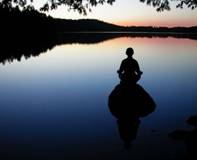
YOGA POSES FOR GOUT
Eagle Pose
Supplies fresh blood to the reproductive organs and the kidneys, increasing sexual power and control. It helps firm calves, thighs, hips, abdomen, and upper arms. It also improves the flexibility of the hip, knee, and ankle joints and strengthens the latissimus dorsi, trapezius, and deltoid muscles.
Spine Twisting Pose
Spine Twisting Pose is the only exercise that twists the spine from top to bottom at the same time. As a result, it increases circulation and nutrition to spinal nerves, veins, and tissues. It improves spinal elasticity and flexibility of the hip joints. It helps to cure lumbago and rheumatism of the spine, improves digestion, removes flatulence from the intestines, and firms the abdomen, thighs and buttocks.
Hands To Feet Pose
Increases the flexibility of the spine and the sciatic nerves and of most of the tendons and ligaments of the legs, and strengthens the biceps of thighs and calves. It also greatly improves blood circulation in the legs and to the brain, and strengthens the rectus abdominus, gluteus maximus, and oblique, deltoid, and trapezius muscles.
Locust Pose
The Locust Pose is an excellent back strengthener. It is especially recommended before doing poses that require extreme flexibility simply because it builds the strength needed to support the flexibility that will accrue over time.
Awkward Pose
Strengthens and firms all muscles of thighs, calves, and hips, and makes hip joints flexible. It also firms the upper arms. It increases blood circulation in the knees and ankle joints and relieves rheumatism, arthritis, and gout in the legs, and helps to cure slipped disc and lumbago in the lower spine.
Toe Stand Pose
Develops psychological and mental powers-especially patience. Physically, it helps to cure gout and rheumatism of the knees, ankles and feet. It also helps cure hemorrhoid problems.
YOGA ASANAS FOR GOUT
SHAVASANA
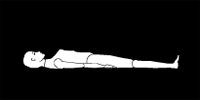
Shavasana is relaxation of body and mind in the position of lying on the back. This asana helps in relaxing mind and body and helps in restoring energy. It is a relaxing posture intended to rejuvenate one's body, mind and spirit. While shavasana is a good way to reduce stress and tension it is not recommended for meditation as it has a tendency to induce sleepiness.
Steps
• Lie on the back.
• Keep your spine, navel & pelvic in one line.
• Keep feet apart.
• Keep arms on the each side of body, palms facing to sky.
• Keep neck right or left side.
• Close your eyes & slowly try to concentrate each part of the body & try to relax that part.
SARVANGASAN
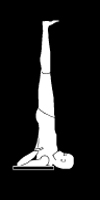
This asana is very good for the thyroid gland. This asana improves the reproductive organs in both men and women. It also helps in relieving bronchitis, dyspepsia, and varicose veins and increases digestive capacity. It stimulates the thyroid and para-thyroid glands and influences the brain, heart and lungs, and improves blood circulation. However, those suffering from high blood pressure should not practice this posture. The sarvanga-asana should not be performed by woman who are menstruating, as is the case with all inverted postures (where the legs are raise over the head.
Steps
• Lie on your back with legs and arms straight, feet together and palms on the floor beside your body. While exhaling, raise your legs slowly upto 90 and then the whole body and the rest your weight on the arms so that the chin touches the jugular notch.
• Bring the arms and hands to support your body at the hip region (fingers at the back and thumb in front of the body). The entire weight of your body rests on the head, neck and shoulders while the arms are used for balancing.
• Keep the trunk, legs and hips in a straight line and as vertical as possible Focus your eyes on your toes, with your chin pressed against the chest. Retain the posture for one for three minutes.
• While exhaling, return to the lying position by bringing the leg backward and releasing the hands and the palms.
MATSYASANA
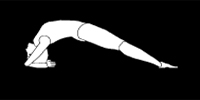
This asana is very useful for persons suffering from chronic cough, bronchial asthma, congestion, infected tonsils and other respiratory disorders. Problems relating to thyroid and para-thyroid glands can also be overcome be done to derive the full of Sarvangasana.it is recommended that you breath while holding it for between two and four minutes.
Steps
• Sit with your legs fully stretched out. Bend each leg at the knees and place your feet on the other hip joint. Both the heels are adjusted in such a way that each presses the adjacent portion of the abdomen. This forms the foot-lock in a sitting position.
• Bend backwards and, exhaling, rest your weight on the elbows. Push your neck backwards and slightly rise the hip upward thus making an arch of the spine.
• Then, by making hooks of the forefingers, hold your toes on the corresponding side without crossing your arms.This posture should be maintained for some time with slow and deep breathing.
• For reverting to the original position, release the foot-lock and return to the supine position by lowering the arch.
DHANURASANA
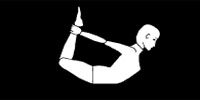
This asana strengthens the abdomen, especially around the navel, and the chest muscles. It improves the flexibility of the arms, shoulders, thighs, legs, lower back and abdomen. The spine also becomes healthy and strong. It is good for relieving flatulence, constipation and menstrual irregularities. It also prevents sterility.
Steps
• Take prone lying position, legs together, hands straight by the side of the thighs, chin resting on the ground. Fold the legs at the knees and bring them on the thighs. Knees must remain together.
• Bring your hands backward and hold the toes of respective legs from the thumb and forefinger of the respective hands.
• Raise your legs a little up and simultaneously raise your head and chest.
• Holding the toes pull the legs towards ears and bring the toes near the ear. Gaze in front.
• While returning to this original position, loosen your hands, take legs backward, let the thighs touch the ground, leave the toes and ultimately bring the legs and hand to the first position
GOMUKHASANA
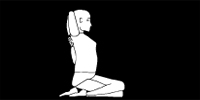
Gomukhasana prevents enlargement of the testicles and calcium deposits in the shoulder joints. It also helps in treating sciatica and piles. It relieves muscular pain in the back and sprains in the forearms. It is one of the best asanas for respiratory disorders, hypertension and cardiac complaints.
Steps
• Sit on the floor with legs outstretched. Fold your left leg and bring the foot under the right hip.
• Similarly, fold the right leg over the left and place the right heel by the side of the left hip. Both the soles should face upwards.
• Raise your right hand and bend it to bring it behind the shoulder.
• In the same way, bend your left hand behind the back and entwine the fingers. Keep your spine straight. Note that if the right leg is over the left, the right elbow should face upward and the left, downwards. This position may be reversed when the leg position is changed.
• Hold the posture for 30 seconds and repeat reversing the sides.
PASCHIMOTTANASANA
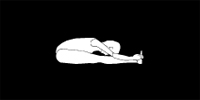
Paschimottanasana is a fine stretching exercise of the body. In one continuous movement, almost all the posterior muscles get fully stretched and relaxed. This helps to improve the functions of the abdominal organs and sets right respiratory disorders. It also helps to improve memory
Steps
• This posture involves stretching of the posterior muscles of the body.
• While sitting, stretch your legs forward and keep them close to each other. Bend a little forward, make hooks of your fingers and hold the big toes on the respective sides.
• While exhaling, bend forward stretching the trunk along the thighs. Rest your on the knees, which should be kept straight.
• Gradually, the tense muscles can be made supple for securing the complete posture. Inhale and return to the original position.
ASTROLOGY
Yoga is a Sanskrit term which means 'to unite'. What is being referred as the 'Yoga' in English, is more commonly known as 'Asana' in Sanskrit, which means different physical postures and poses. It is seen that people of a particular sun sign find it beneficial when they practice certain yoga asanas.According to astrological reports for yoga asanas the above mentioned asanas are said to be effective for those who come under the following zodiac sign.
• TAURUS
• PISCES